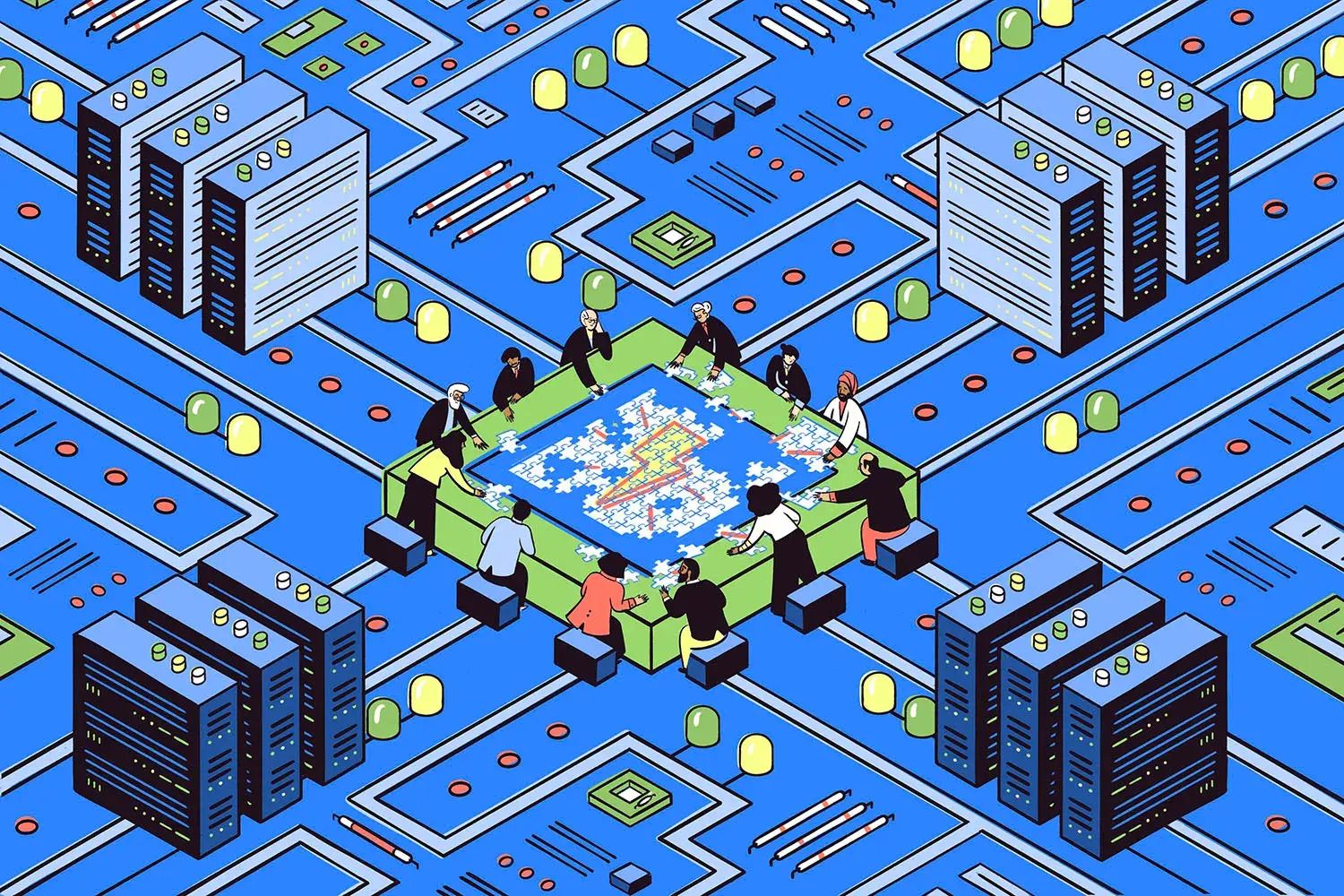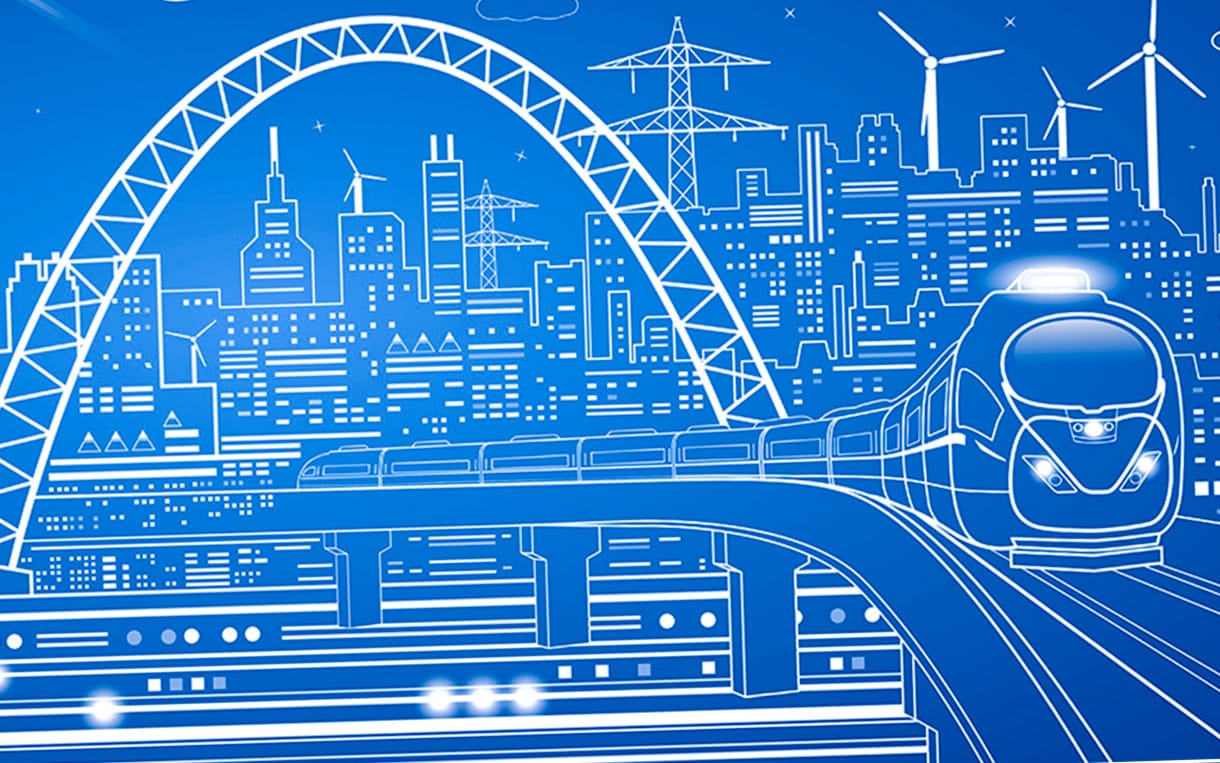- The Digital Bridge with Lawrence Eta
- Posts
- AI Infrastructure & the Knowledge Commons: Lessons for Leaders
AI Infrastructure & the Knowledge Commons: Lessons for Leaders
Tech News, Global Digital Transformation, Thought Leadership and Current Trends


Find your customers on Roku this Black Friday
As with any digital ad campaign, the important thing is to reach streaming audiences who will convert. To that end, Roku’s self-service Ads Manager stands ready with powerful segmentation and targeting options. After all, you know your customers, and we know our streaming audience.
Worried it’s too late to spin up new Black Friday creative? With Roku Ads Manager, you can easily import and augment existing creative assets from your social channels. We also have AI-assisted upscaling, so every ad is primed for CTV.
Once you’ve done this, then you can easily set up A/B tests to flight different creative variants and Black Friday offers. If you’re a Shopify brand, you can even run shoppable ads directly on-screen so viewers can purchase with just a click of their Roku remote.
Bonus: we’re gifting you $5K in ad credits when you spend your first $5K on Roku Ads Manager. Just sign up and use code GET5K. Terms apply.
We’re entering an age where the true test of leadership isn’t whether we can build more powerful systems, but whether we can build sustainable, shared, and ethical ones.
The rapid acceleration of AI has sparked an equally urgent race to construct the physical and digital foundations that power it; data centres, cloud platforms, connectivity grids, and open-data frameworks.
Yet as billions are poured into infrastructure, a deeper question emerges: Who owns the knowledge it enables?
The concept of the knowledge commons; open, shared systems of information that anyone can use and build upon, sits at the heart of equitable innovation. For leaders, the challenge is to balance ambition with accessibility, control with collaboration, and profit with public good.
This week’s edition examines how AI infrastructure and the knowledge commons are shaping the global digital landscape, and what lessons today’s leaders can draw as they build for tomorrow. We’re entering a phase where digital trust, infrastructure, and shared knowledge are converging into the strategic foundation of competitive, and resilient organisations.
The question for leaders is not simply “Can we build the tools?”, but “How do we build infrastructure that serves every stakeholder, strengthens institutions, and sustains innovation?”
This week’s edition covers:
Policy Meets Power: OpenAI urges U.S. policymakers to extend the CHIPS Act to cover energy and infrastructure investments for AI. (Bloomberg Tech, Nov 6 2025)
The Global AI Infrastructure Boom: Microsoft expands its AI data centre investments into the UAE, marking a new wave of regional tech competition. (Reuters, Nov 5 2025)
The Supply Chain Strain: Global construction and equipment shortages threaten to slow down large-scale data projects. (IAfrica Business Review, Nov 7 2025)
Unesco's call for Digital Equity: New commentary urges governments to protect the “knowledge commons” as the world races toward closed AI ecosystems. (UNESCO Brief, Nov 8 2025)
Leaders Lessons: What organisations can learn from the current infrastructure race to build smarter, fairer digital economies.
POLICY MEETS POWER
Policy Meets Power: The Geopolitics of AI Infrastructure

Policy is no longer playing catch-up, it’s steering the race. In the past week, governments have shifted from reactive regulation to proactive strategy around AI infrastructure, signalling a new phase in digital governance.
The European Union (Nov 5, 2025) announced plans to extend its AI Act enforcement framework to include infrastructure accountability, ensuring data centres meet both ethical and environmental standards. This move reframes infrastructure from a technical layer to a moral one, linking compute access to responsible energy use and bias mitigation.
Meanwhile, the U.S. (Nov 6, 2025) launched a bipartisan initiative to fund “trusted compute corridors”, an effort to reduce reliance on global chip supply chains and secure domestic AI compute. It’s not just about sovereignty; it’s about shaping who controls the means of intelligence.
And in Africa (Nov 8, 2025), the African Union’s Digital Policy Forum spotlighted the continent’s growing ambition to build shared AI research infrastructure. Leaders emphasized a “knowledge commons” approach, pooling data, compute, and research talent to enable collective growth rather than fragmented national efforts.
These developments underscore a new truth: policy is power.
Leaders can no longer separate governance from growth. The nations and organizations that align ethical foresight with technological capability will shape not only the markets of tomorrow, but the moral frameworks that define them.
INFRASTRUCTURE BOOM
The Infrastructure Surge: Who Builds and Who Controls?

In early November, Microsoft and OpenAI reignited the global infrastructure conversation.
Microsoft announced a massive multi-billion-dollar investment in AI-focused data centres in the United Arab Emirates, solidifying the region as a growing technology hub.
Meanwhile, OpenAI urged policymakers to expand the CHIPS Act; a signal that AI infrastructure has become as strategic as semiconductors themselves.
By November 10, analysts from IT-Online were already calling 2025 a “data-centre inflection point,” with record construction volumes, surging costs, and fierce competition for energy and compute resources.
AI leadership today isn’t just about deploying models, it’s about owning the rails they run on.
The implications for leadership are profound. Infrastructure decisions—where to build, who owns it, how energy and data flows are governed, sit at the strategic core of digital transformation.
Decisions around compute, energy, and location are now strategic. Forward-thinking leaders must ask:
Are we investing in infrastructure that strengthens our autonomy, or deepens dependency?
How do our partnerships align with our data-governance and innovation values?
What regional opportunities exist to build capacity closer to where our value is created?
SUPPLY IN AI INFRASTRUCTURE
Supply Chains, Energy, and the New Bottlenecks

While demand for AI infrastructure soars, the physical limits are becoming visible.
Reports from IAfrica Business Review (Nov 7) and InfraGlobal Insights (Nov 6) revealed that over 80% of developers believe current supply chains are unprepared for the high-density, liquid-cooled facilities required by modern AI workloads.
Rising construction costs, energy scarcity, and equipment shortages are stretching even well-funded projects.
A separate study found traditional data-centre designs are already proving inadequate: 90% of IT leaders anticipate huge data-volume growth from AI yet only 41% say their current design supports it (Lenovo research, Nov 6, 2025).
This reveals a truth often overlooked: the challenge isn't just “build more” but “build smarter.
Leadership in this era requires systems thinking. Infrastructure is no longer a back-office consideration, it’s an enterprise-risk issue.
Mitigating supply-chain fragility, diversifying energy sources, and designing for resilience will distinguish organisations that scale sustainably from those that stall in growth crises.
Factor in systemic risks like power shortage, cooling inefficiency or delayed logistics.
Map out dependencies in your supply chain and energy infrastructure; early.
Prioritise infrastructure resilience and agility alongside raw capacity.
/
The Knowledge Commons: Beyond Hardware

A new report from the UCL Institute for Innovation and Public Purpose (Nov 4) revealed that while over 100 nations have established digital data-sharing frameworks, many remain siloed or restricted by policy.
Meanwhile, UNESCO (Nov 8) published a sharp commentary urging nations to preserve open access to data and AI tools as public goods, warning that the consolidation of “AI power” risks deepening global inequality.
Infrastructure becomes transformative when paired with systems of knowledge sharing and access. A key idea from the literature is that the knowledge commons should be non-excludable and non-depleting
True infrastructure leadership isn’t only about what you build, it’s about what you make possible.
In the era of AI, the knowledge commons becomes a multiplier of innovation. The most resilient organisations won’t just protect data, they’ll design ecosystems where learning compounds across teams, partners, and even competitors.
From an organisational perspective, leaders should recognise that owning compute is one thing; enabling flows of knowledge, reuse of data and collaborative ecosystems is another.
Design your data-strategy for reuse, interoperability and shared value—rather than closed silos.
Position your organisation to actively participate in knowledge networks, not just consume infrastructure.
Embed governance frameworks that shift from “who controls” to “who contributes and benefits.
LEADERSHIP IS THE FUTURE OF AI
Leader’s Lessons

The age of AI demands that we treat infrastructure as a strategic asset, not an operational afterthought. It no longer sits quietly in IT departments, it sits in the boardroom, shaping how organizations create value, compete, and govern.
In this landscape, open ecosystems consistently outperform closed ones. Inclusive platforms generate scale, speed, and legitimacy, factors that matter far more than tight control or proprietary walls. The future belongs to those who can collaborate intelligently across networks and industries.
But the risks are structural, not incidental. Energy, supply chains, and governance can no longer be viewed as secondary issues. They are core to resilience and innovation. The leaders who understand this weave risk management into the very fabric of their infrastructure strategies.
At the heart of it all lies governance. Ethical and transparent design isn’t just compliance, it’s leadership. It’s what builds trust, credibility, and long-term value in a world increasingly driven by algorithms and automation.
And finally, knowledge flows matter. Access without usability is wasted potential. Capability matters as much as content, and leaders must invest in systems that enable people to interpret, apply, and share what they know.
Audit your digital foundation. Identify dependencies across cloud, compute, and energy, and ask whether they’re strategic or accidental.
Form alliances grounded in shared value. Choose partnerships that strengthen the knowledge commons, not just reduce costs.
Prioritise inclusive design. Build infrastructure that enables participation, not exclusion.
Invest in learning systems. Knowledge must move as freely as data supported by frameworks for access, translation, and growth.
This is what distinguishes those who build digital empires from those who build digital legacies.
What does leadership look like in this era of rapid digital transformation?
It’s not just about adopting technology, it’s about embodying wisdom.
The AI infrastructure surge is real, but the larger prize lies not in sheer capacity, but in how knowledge is surfaced, shared and scaled.
Leaders who treat infrastructure and the knowledge commons as intertwined engines of innovation will build not just bigger systems, but smarter, fairer and more resilient ones.
As leaders, we often invest in technology, but how often do we invest in the infrastructure of knowledge that determines whether innovation truly scales?
Don’t miss out on future updates, follow me on social media for the latest news, behind-the-scenes content, and more:
Twitter: Click here
Facebook: Click here
Instagram: Click here
LinkedIn: Click here
Enjoyed this newsletter? Share it with friends and help us spread the word!
Until next time, happy reading!
JOIN THE COMMUNITY
The Bridging Worlds Book
Discover Bridging Worlds, a thought-provoking book on technology, leadership, and public service. Explore Lawrence’s insights on how technology is reshaping the landscape and the core principles of effective leadership in the digital age.
Order your copy today and explore the future of leadership and technology.
SHARE YOUR THOUGHTS
We value your feedback!
Your thoughts and opinions help us improve our newsletter. Please take a moment to let us know what you think.
How would you rate this newsletter? |


Reply